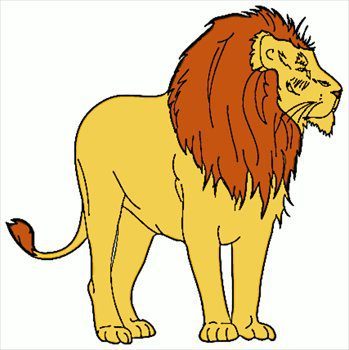Lions are probably my favourite animals, for me lions are remarkable animals with there, power, laziness, family bonds, prowess. They have been part of my life from a very young age from when I watched The Lion King for the very first time. The film helped to kick start a fascination of Lions, big cats and African Wildlife. When I was two in 1996 I remember watching the first series of big cat diary with my grandad. My favourite cat was a big adult male lion called notch, from then on I started researching lions trying to learn as much as possible. At the age 17 I did a two-week work placement at a big cat sanctuary in which I got to work with African Lions and White Lions as well as other cats. During the work placement I was in awe about how magnificent these cats are and how beautiful they are. I was lucky enough to be able to feed a adult male Lion through the bars of the enclosure. At night time I was staying in my dad’s caravan on a campsite nearby I could hear the magnificent sound of the lion roaring. Thanks to this first encounter, I have now dedicated my life to wanting to save these amazing creatures.
Fact file
Vital statistics
Weight: 112-180kg
Length: 2.4-2.7m
Height:75-90cm
Habitat: sub-Saharan Africa, desert fringe, woodland and open savannah
Colour: tawny
social behaviour
- Lions are the only social able cat, living in prides of between 2-40 cats.
- A pride has a sisterhood of lionesses that help raise cubs and hunt.
- Some prides have coalitions of males ranging from 2-6 to defend the prides territory.
- A lion prides territory is between 20km squared and 500km squared.
- Infanticide is very common among lions, this is where male’s takeover a pride and kills the previous pride male cubs. This is so that his genes can be passed on as after about 2 weeks the lioness will come back into oestrus.
Reproduction
- lionesses may come into heat several times a year, if not raising cubs. Lion can breed all year round a generally sync there breeding with the other pride lionesses.
- Once a lioness is in season she will actively seek out the attention of the pride males. They will then mate every 25minutes for over 3-4 days but conceiving is never guaranteed and may take several more attempts.
- Lion gestation is about 110days, with litter sizes between 1-7 (normally 3)
- Lion cubs are born blind and cannot walk for up to 3 weeks, so a lioness will leave the pride for a period of time. She will then hunt nearly the den sight.
- Once back into the pride, the pride lionesses rear cub in a crèche and will suckle each other’s cubs.
Hunting
- Lions hunt a variety of prey ranging from warthog, zebra, wildebeest and antelope to buffalo, giraffe, hippo and even sometimes elephant.
- Lions are co-operative hunters and their success rate is better working as a pride than a single lion. Their success rate is 0.28 for 1 lioness compared to 0.75 for 7 lions. Lions are often unsuccessful.
- A lion’s strategy is amongst the best of any predator an example of this is younger lions drive a herd of wildebeest to experienced lions waiting in ambush.
- The ambush, once a target is selected a lion will chase it until they can grab it, they then jump on its back and dig there claws in. they then grab the neck with their teeth to crush its wind pipe. With larger prey items they cover the preys mouth and nose with their mouth to suffocate it.
- Once the prey has been killed, there is sometimes a hierarchy when the pride male is around. This is pride male feeds until full then lionesses and cubs however sometimes the pride male let the cubs feed with them. Males eat about 18-30 kg of meat in one sitting were as lionesses will eat 18-20 kg of meat. They will not need to hunt for 4-6 days afterwards depending on pride size and season.
- Fascinating facts
- Lions roar can be heard from 5 miles away
- Lions can sleep for 20 hours a day
- The Asiatic Lion only lives in and around the Gir forest in India
Under threat
Lion population is currently 25000 – 20000 but since I have been alive ( I’m about 22) the lion population has dropped by nearly 50%. The reasons for this are loss of habitat due to expanding population, human-wildlife conflict, sport hunting and hunting for lion bones for the medicinal market.
What can we do to save lions
Education: by educating people about the plight of lion people are more likely to want to do something and raise the conservationists of the future
Research: by carrying out research, farmers can see if the lions are predating on livestock they can possibly be relocated.
Giving: by giving and sponsoring different zoo’s and charities vital work out in the field is funded.

